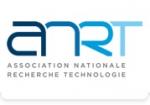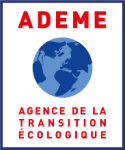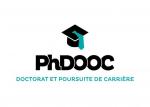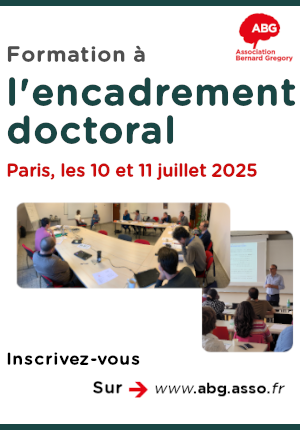Acquisition and use of field data for modelling the multifunctionality of Nature-based Solutions in urban environments: thermo-hydric aspects of plant cover
| ABG-132522 | Thesis topic | |
| 2025-06-15 | Public/private mixed funding |
- Ecology, environment
Topic description
Context
With regard to biophysical processes, the aim is to improve the knowledge of the relationships between the typology and development of the vegetation cover, its thermo-hydric behaviour and the resulting ecosystem functions/services (particularly in terms of rainwater management and urban cooling) within urban green spaces and structures, according to different climate scenarios (present and future).
Objectives
The aim of this thesis is to collect and use data from field measurements in order to implement a systemic approach that will objectively quantify the multifunctionality of SFNs (infrastructure or green spaces) in an urban environment in a variety of contexts (school grounds, roofs, traffic areas) in different urban areas (Les Mureaux, Strasbourg Eurometropolis…). This will involve:
- define and characterise (through field measurements or by consulting dedicated databases) a set of plant functional traits (LAI, stomatal conductance, root tairts…) likely to have a significant influence on water and energy transfers in the soil-plant-atmosphere continuum (SPAC);
- propose, on the basis of statistical analyses using these measurements and those of environmental variables collected within the SFN, one or more conceptual models linking the functional traits to indicators of the "performance" of the SFN;
- implement (possibly by coupling physical and ecophysiological models) a modelling approach that allows these transfers to be understood dynamically, at variable time steps, while integrating the heterogeneity of plant traits (reflecting the diversity of communities and their evolution over time, e.g.model the impact of different SFN design scenarios on the services provided.
Méthodology
The thesis will be structured around three main stages:
1. state of the art on the influence of plant functional traits on water and energy transfers in the SPAC, with a focus on the context of the SFN studied and on the biophysical models proposed (models based on physics/mixing plant physiology); acquisition of the first series of data (local microclimatic variables, soils, characteristics of plant cover) and implementation of a dedicated database (a strategy for the remote acquisition of certain data (environmental measurements) integrating sensor networks will have been the subject of work prior to the thesis).
2. Mainly biophysical (and to some extent statistical) modelling; continuation of measurement campaigns.
3. Modelling of future scenarios taking into account certain climate projections for certain areas/SFN. Valorisation of results - drafting of thesis manuscript.
In addition to the work of the PhD student, the acquisition of field measurements will also involve the different partners/teams of the ANR project, depending on the sites.
Location:
The thesis will be carried out at the Cerema site in Tomblaine (54), in conjunction with the Cerema agency in Trappes and the CSTB.
This work will be carried out in collaboration with partner research teams (ENPC, INRAE, Lab'Urba) and in interaction with the other partners in the ANR project (OFB, SOPREMA, local authorities).
Starting date
Funding category
Funding further details
Presentation of host institution and host laboratory
https://www.cerema.fr/en/innovation-recherche/recherche/equipes/team-transfers-and-interactions-linked-water-built
PhD title
Country where you obtained your PhD
Candidate's profile
- Master 2 or engineer in plant ecophysiology, biophysical modelling, (eco)hydrology, agronomy, environmental sciences
- Interest in plant ecophysiology/bioclimatic aspects, ‘Nature-based solutions’
- Curiosity, thoroughness and ability to report on methods and results
- Very good organisational skills and ability to work independently on sites (regular travel required, paid for by the project)
- Good knowledge of data processing and analysis, languages (R and/or Python...) and scientific tools/computer modelling
- Good writing skills and good interpersonal skills.
Vous avez déjà un compte ?
Nouvel utilisateur ?
Get ABG’s monthly newsletters including news, job offers, grants & fellowships and a selection of relevant events…
Discover our members
 Généthon
Généthon  Institut Sup'biotech de Paris
Institut Sup'biotech de Paris  TotalEnergies
TotalEnergies  MabDesign
MabDesign  SUEZ
SUEZ  Laboratoire National de Métrologie et d'Essais - LNE
Laboratoire National de Métrologie et d'Essais - LNE  Tecknowmetrix
Tecknowmetrix  CASDEN
CASDEN  Nokia Bell Labs France
Nokia Bell Labs France  Groupe AFNOR - Association française de normalisation
Groupe AFNOR - Association française de normalisation  Ifremer
Ifremer  ONERA - The French Aerospace Lab
ONERA - The French Aerospace Lab  ANRT
ANRT  CESI
CESI  Aérocentre, Pôle d'excellence régional
Aérocentre, Pôle d'excellence régional  ADEME
ADEME  PhDOOC
PhDOOC  ASNR - Autorité de sûreté nucléaire et de radioprotection - Siège
ASNR - Autorité de sûreté nucléaire et de radioprotection - Siège  MabDesign
MabDesign







